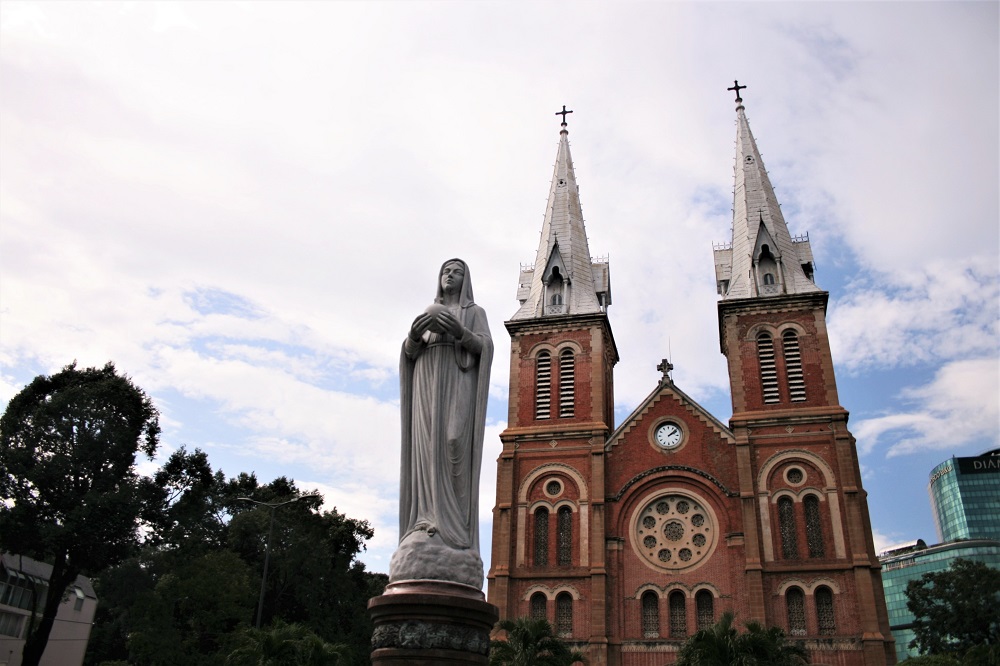Ho Chi Minh City is Vietnam‘s financial capital. It’s also the country’s most global, most metropolitan city. Otherwise known as Saigon, the city is home to almost 8.5 million people.
There’s a noticeable Western influence in the city centre, more so than in other parts of Vietnam, with coffee shops on street corners and a large shopping centre full of well-known high street brands.

Our first stop was the Notre Dame Cathedral, an elegant 19th century French-style cathedral covered with red tiles.
The cathedral was closed when we arrived, and while it was a shame we couldn’t go inside, it was nevertheless lovely to look at.
So we stood around the small garden in front of it to take a few photos before heading across the road to the General Post Office (below).

Built at the end of the 19th century, the General Post Office is the most beautiful post office I have ever laid eyes on. Inside, it has a high-vaulted cream ceiling with a dark green and peach pattern, an ornate tiled floor and wonderful dark wooden booths.
There are also maps hanging on the walls, clocks that show the time in different cities around the world, and on the far wall, opposite the entrance, a massive portrait of Ho Chi Minh.
The architecture is glorious and we spent a good 20 minutes looking around and admiring it all.
The next stop on our itinerary was the War Remnants Museum. The museum features exhibitions, told from a Vietnamese perspective, about the Vietnam War and specifically, the atrocities committed.
I found the displays, especially some of the photographs, harrowing and upsetting at times.
Some of the photographs are heartbreaking and disturbing, particularly those featuring children, and I found it hard to wrap my head around how human beings could commit such crimes against one another.
The museum effectively conveys the horrors of the war and the terrible effects it had on the people who endured it. And as difficult as it was to see and read about the atrocities, I was glad I visited the museum.
Although I had been aware of some of the crimes committed during the war, I left with a far greater understanding of what happened and the tremendous suffering caused. It was a sobering, thought-provoking visit.




